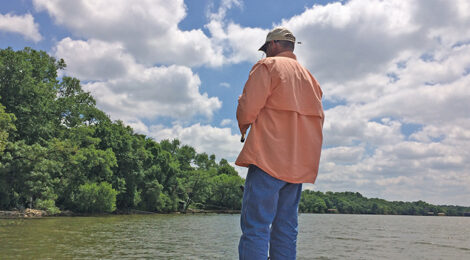
Comeback Player of the Year
Lakes with a significant drop in its water level, then inundation of acres of cover results in increased fish recruitment.
Story and photography by Brian Hughes
Anyone that follows bass fishing closely, especially trophy bass fishing, has probably heard about the amazing things happening at O.H. Ivie Reservoir. I say happening because this tremendous big bass fishery has just put out ANOTHER fish over 13 pounds as I write this in late June. In addition, the “Ivie Crew” has continued to catch double digit bass at a furious pace, even after the ShareLunker Legacy period ended on the last day of March. Forward-facing sonar has played a huge part in the catching of these fish, but that’s a story for another time.
The focus at Ivie should be on the lake itself and why it has so many big fish to begin with. While I think there are several factors in play here, many of which have already been discussed, I’m also curious about other “comeback” lakes around the state. So what is it, where can you find it, and how do you take advantage of what’s available?
I think the first thing to realize is why we even call them “comeback” lakes. The lakes we’re talking about have all been around for quite a while. Some have been good fisheries in the past as well. But to a lake, they’ve suffered some decline and then a resurgence — hence a comeback. I don’t think any of these other lakes will unseat O.H. Ivie as the king any time soon but there’s still some really good fishing to be had.
Water levels are the first key in this puzzle, as all of the lakes we’re discussing had some period of low water, followed at some point by a quick return to full or nearly full levels. Ivie was at one point over 30 feet low. When the water returned it inundated thousands of acres of brush, grasses, trees and other vegetation that had grown on what was dry land before the water returned.
************************************************************************
To read more, click here to SUBSCRIBE







